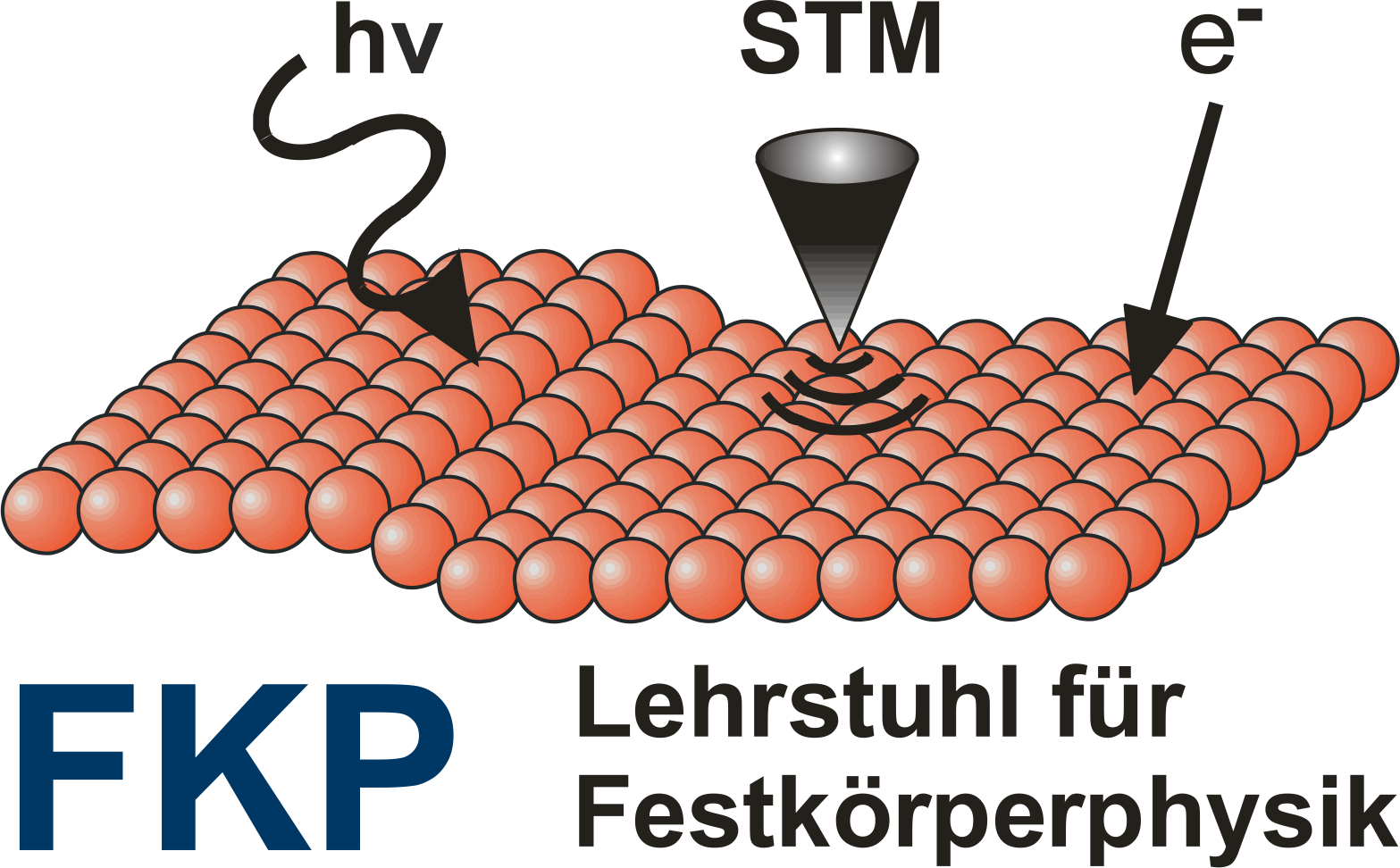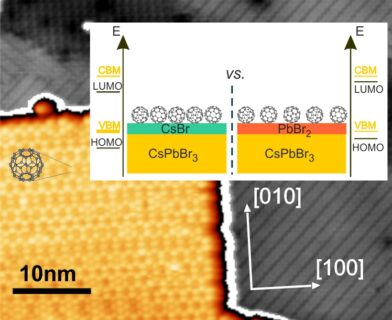Molecules on perovskite solar cell materials: Self-assembly and level alignment
The so-called ‘Perovskite solar cells’ have achieved remarkable efficiency improvements over the past twenty years, reaching up to 25%. This progress is largely attributed to the discovery and optimization of functional layers that interface the perovskite light absorber with the external environment. However, despite these advancements, perovskite solar cells remain confined to laboratory settings yet, and numerous challenges still need to be addressed before commercialization.
A critical aspect of solar cell functionality involves the layers that transport photogenerated charge carriers away from the absorber. In our model system approach, we investigated the properties of single layers of C60 (‘buckyball’) molecules on perovskite CsPbBr3 thin films at the atomic scale using Scanning Tunneling Microscopy and Spectroscopy.
C60 is utilized as an electron transport layer in devices. We demonstrated that when C60 is adsorbed on CsPbBr3, the lowest unoccupied molecular orbital (LUMO) is energetically positioned below the conduction band minimum (CBM) of the perovskite, as expected, allowing for efficient electron extraction from the optical absorber. However, our findings reveal that both the molecular layer’s structure —specifically the arrangement of molecules on the surface— and the exact positioning of the electronic orbitals are critically dependent on the surface termination of the CsPbBr3 layer. This termination can either be CsBr or PbBr2 and can be adjusted by controlling the CsBr to PbBr2 flux ratio during thin film preparation.
Our study highlights that precise control of internal interfaces in devices is key to enhancing device functionality. This work, based on Hannah’s Master’s thesis, has now been published in ACS Nano.
H. Loh, A. Raabgrund, and M.A. Schneider, ACS Nano 19, 10199–10206 (2025)

